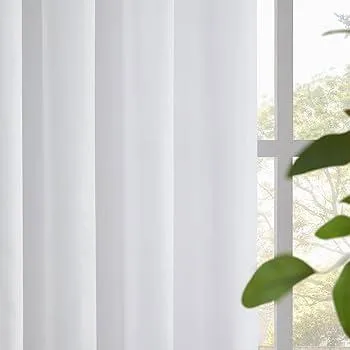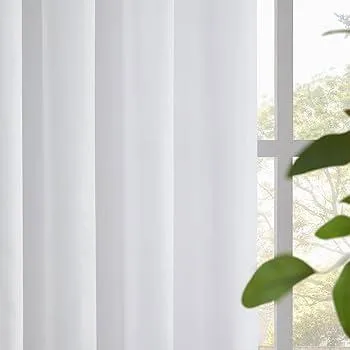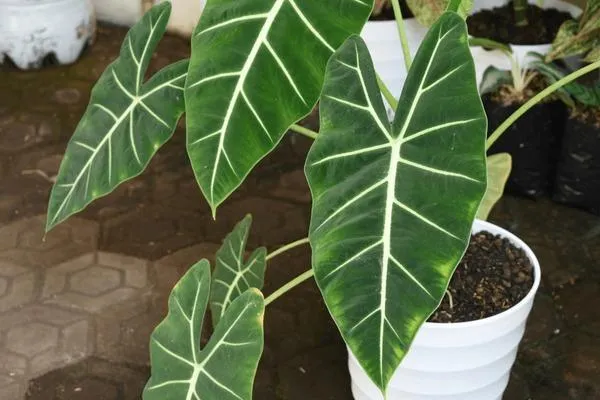A Guide to Plants With Velvety Soft Leaves
If you’re looking for foliage with an unusually velvety texture, you’ve come to the right place. Several beautiful houseplants feature leaves that feel as soft as velvet to the touch. In this article, I’ll explain the key characteristics of velvet-leafed plants and provide recommendations for some top varieties to consider.
What Makes a Leaf Velvety?
The velvet texture found on certain plant leaves is due to a dense covering of very short hairs called trichomes. Trichomes are epidermal outgrowths that give leaves, stems, and flowers their distinctive “fuzziness.” On velvet-leafed plants, the trichomes are extremely fine and densely packed together, creating a plush feel reminiscent of plush fabric.
From my experience growing various textures of houseplants, leaves with trichomes have a few key qualities:
- Soft and fuzzy to the touch due to numerous tiny hairs
- Dull or matte appearance rather than shiny
- Often deep, dark green or purple/red hues
The trichomes serve purposes beyond just aesthetics. They help reduce water loss through transpiration and protect against herbivores and pathogens. So velvet leaves evolved as an adaptive advantage for certain plant species.
Popular Velvet-Leafed Houseplants
Here are some top plant picks if you want to add velvety soft foliage to your indoor jungle:
Velvet Plant (Gynura aurantiaca) – As its name implies, this is the quintessential velvet-leafed choice. Its leaves come in various shades of deep green and purple, coated in dense soft hairs.
Polka Dot Plant (Hypoestes phyllostachya) – Unique leaves spotted with pink or white give this plant its common name. But the fuzzy green leaves feel ultra-plush.
Zebra Plant (Haworthia attenuata) – Succulent leaves featuring bold stripes come with a velvety sheen. Low-light tolerant and drought resilient.
Peperomia species – Many peperomias like Peperomia obtusifolia boast leaves cloaked in a velvet veil. Great for bright, indirect sun spots.

Coleus (Plectranthus scutellarioides) – Beyond just velvet leaves, coleus offers sculpted foliage in every color imaginable. Pick your favorite leaf shape and hue!
Persian Shield (Strobilanthes dyerianus) – This underrated plant boasts leaves tinged purple underneath with a soft down covering. Prefers partial shade.
Calathea species – Known for their ornate foliage patterns, calatheas like C. orbifolia come with fuzzy velvety backs perfect for gentle petting.
No matter which option appeals to you most, all of these soft-leafed beauties will add luxurious and captivating visual interest indoors. Their unique textures are sure to be conversation starters with plant-loving visitors!
Tips For Growing Velvet Plants
While velvet plants vary in their specific care needs, here are some general tips to keep their fuzzy leaves looking their fuzzy best:
Water judiciously. Most prefer moist but not soggy soil. Allow top inch to dry between waterings. Overwatering can cause mushy brown leaf spots.
Mist leaves frequently. The trichomes allow plants to collect water droplets, so misting replenishes moisture and reduces browning. I mist my collection 2-3 times weekly.
Provide warming humidity. Most appreciate humidity levels around 50%. Use pebble trays or a humidity tray to bump up humidity indoors for content fuzzballs.
Rotate plant placement weekly. Different sides of leaves may color or fade unevenly indoors without occasional turning. Rotate to promote even growth.

Prune off damaged leaves promptly. Remove any leaves showing signs of pests, disease or damage to prioritize plant health overall. Cut stems just above leaf nodes or stems.
Repot yearly in spring as needed. Repot into fresh soil when roots start circling the inner pot rim. Transplanting stimulates new growth.
With regular TLC according to their needs, even a non-plant person can grow gorgeous velvety leaves indoors. Soon their fuzzy texture will become your new favorite foliage feature! Do you have any other velvet plant care questions? Let me know!
A Velvet Foliage Collection Like No Other
Okay folks, you ready to hear a seriously incredible plant story? I recently visited a local greenhouse and stumbled upon a collector who has amassed the most stunning array of unusual velvet-leafed plants anywhere in the state, if not further. kind of felt like I was transported to a magical plant jungle!
This woman has built her collection over 35 years of patient sourcing and propagation. She introduced me to rarities I didn’t even know existed, like super fuzzy cultivars of peperomias and begonias imported from Southeast Asia. The greenhouse was packed stem to stem with plush greenery in every hue. I even spotted shades of burgundy and iridescent blue that took my breath away.
Her secret, she shared, is intensive cloning methods to multiply hard-to-find specimens obtained through exotic plant traders. She maintains stringent care protocols like bottom heat mats, rainhead irrigation and grow lights to satisfy even fussiest textures. The result is nothing short of plant heaven. I left floating on a fuzzy leaf cloud, dreaming of one day having even a fraction of her collection’s diversity. If you get the chance to meet this plant wizard, don’t pass it up! Your velvet jones will thank you.
Handling Pests On Velvet Leaves
Like any plant, velvet foliage is prone to occasional pest issues that require treatment. However, some pests pose unique challenges for plush leaves. Here are my tips for gently managing common velvet plant pests:
Mealybugs: These fluffy white pests can hide easily in trichome clusters. Carefully wipe leaves with cotton balls dipped in rubbing alcohol. Be thorough while avoiding rubbing off trichomes.
Spider mites: The tiny spiders that weave webs may be hard to spot on dark leaves. Check leaf undersides with a magnifying glass. Treat with neem or insecticidal soap, misting thoroughly.

Scale: The hard shells of these sucking pests can cling to trichomes. Gently scrape them off with your fingernail or cotton swab dipped in rubbing alcohol.
Aphids: The small green or black bugs congregate in leaf clusters. Flush them away with a strong water spray. Quarantine infested plants to contain spread.
Fungus gnats: Lightly watering from below and keeping soil relatively dry discourages these pesky fliers. Add a layer of coarse sand or gravel to soil surface as a barrier.
With care taken when spraying or wiping leaves, you can easily treat pests without damaging velvety texture. Early detection is key – a few pests become a larger infestation fast! Check leaves front and back regularly.
So in summary, while velvet plants may seem fussy, with a little extra TLC their plush foliage is well worth your plant parenting efforts indoors. Their unique textures make an unforgettable design statement. Please let me know if you need any other plant advice! I’m always happy to chat.
Top Plants with Velvety Leaves
| Plant | Light Needs | Watering | Care Tips |
|---|---|---|---|
| Peperomia | Bright indirect light | Allow soil to dry slightly between waterings | Mist leaves to keep them velvety; propagate by stem cuttings |
| Coleus | Bright light | Water when top inch of soil is dry | Prune to maintain bushy shape; bring indoors before first frost |
| Dieffenbachia | Medium to bright indirect light | Let soil dry out slightly between waterings | Mist leaves to prevent dust buildup; toxic to pets |
| Polka-dot plant | Bright indirect light | Water when top inch of soil is dry | Trim leggy growth to encourage bushiness; flowers attract bees |
| Zebra plant | Bright indirect light | Water when top inch of soil is dry | Deadhead spent flowers; cut back biannually for bushier growth |
FAQ
-
What are plant leaves with velvet feeling?
Some plants have unusually fuzzy or velvety leaves. These leaves have very fine hairs that give them a soft, plush-like texture. The hairs help protect the plant from sunlight or heat.
-
Why do some plant leaves feel fuzzy?
Plants grow soft hairs on their leaves for a few important reasons. Mainly, the hairs provide protection from too much sun. They kind of act like a natural sunscreen. The hairs also help stop leaves from losing too much water. So plants with fuzzy leaves can live in hotter, drier areas than plants without hairy leaves.
-
What kinds of plants have velvety leaves?
A number of different plant species grow leaves that feel very soft or fuzzy. Some common ones are coleus, baby’s tears, lamb’s ears, and geraniums. Succulents also sometimes have leaves covered in short hairs. Basically, any plant growing in an area that gets very strong sunlight may evolve fuzzy leaves as a defense.
-
Are velvet plant leaves smooth to touch?
Despite looking fuzzy or velvety, plant leaves with lots of hairs can feel mighty smooth! The hairs are actually extremely fine. Under a magnifying glass, you’d see they’re more like tiny scales overlapping the leaf surface. So while these plush leaves appear soft, gently gliding your hand over them may give more of a silky or slick vibe than a fuzzy one. The hairs lay flat against the leaf.

-
Do all plants with fuzzy leaves serve the same purpose?
While protection from the sun is a common reason for hairy leaves, there are a couple other possible purposes too. In some species, the hairs help repel hungry insects from munching the leaves. Furthermore, the fuzzy coating may reduce water loss in very dry conditions. So in summary – fuzzy leaves can defend against sun, bugs, and dehydration. I guess you could say the hairy coating serves as natural plant armor!
-
How can you care for plants with soft leaves?
Tender velvet leaves require somewhat different care than coarse leaf varieties. Gentle watering is key, since too much moisture can damage the delicate hairs. Also, protect from direct sun at midday, when rays are strongest. The plant may need a partially shaded spot. Regarding pruning, try not to brush against leaves more than needed. And light dusting instead of vigorous wiping keeps leaves in tip-top shape. With some extra care shown to those fuzzy friends, your plush-leafed plants will thrive.
